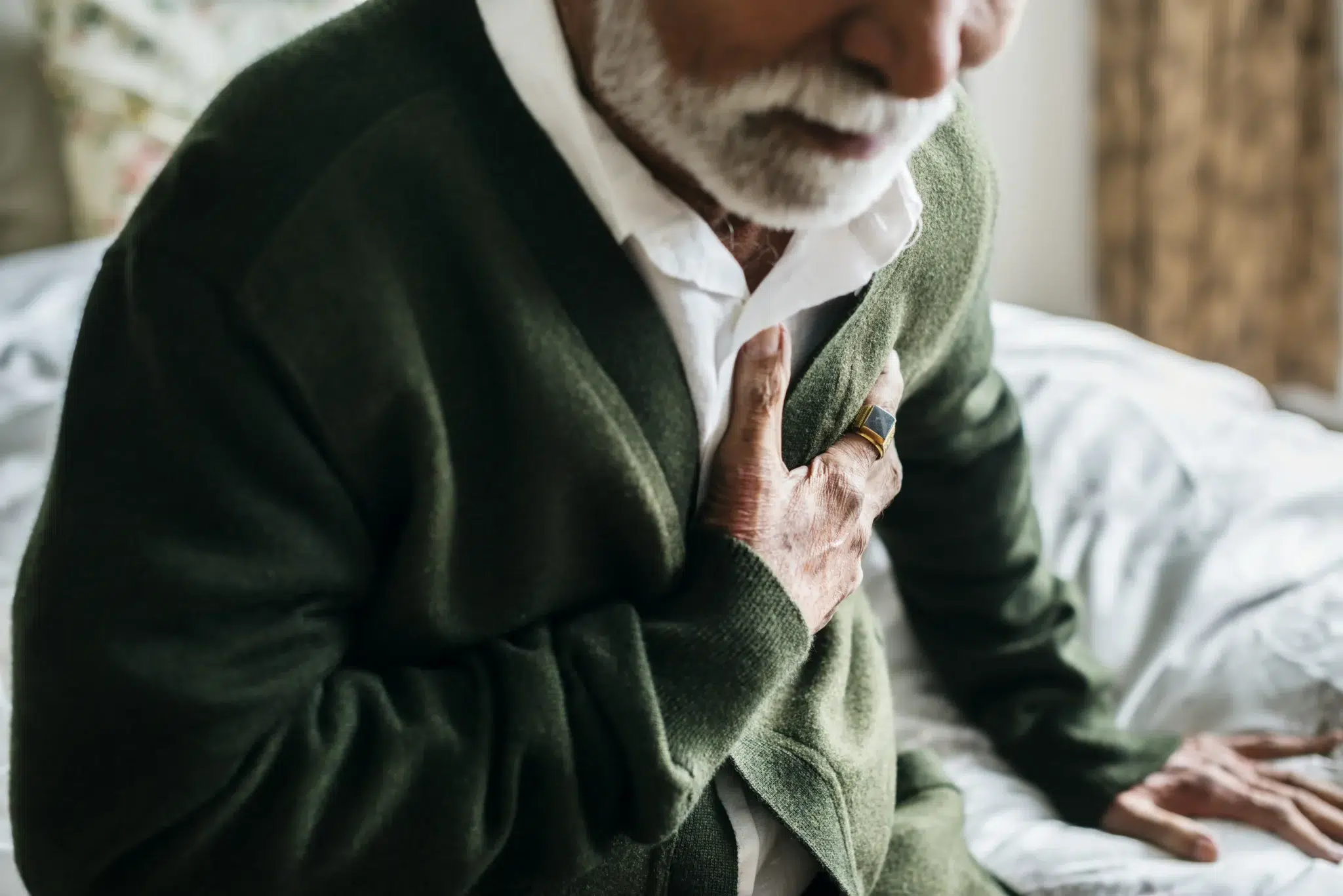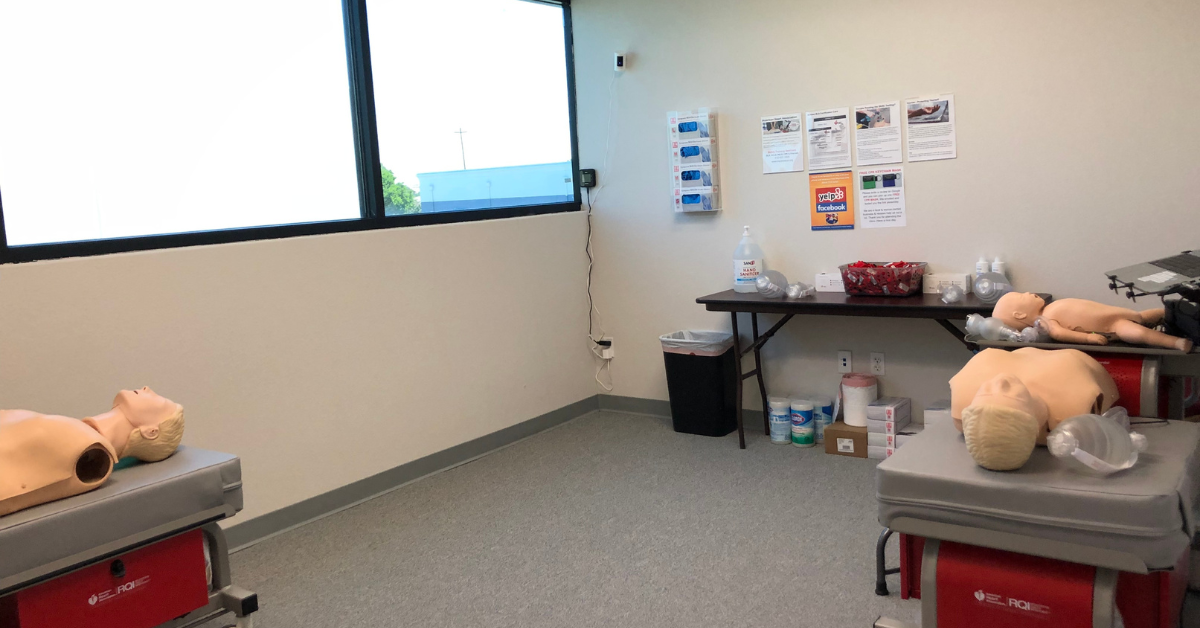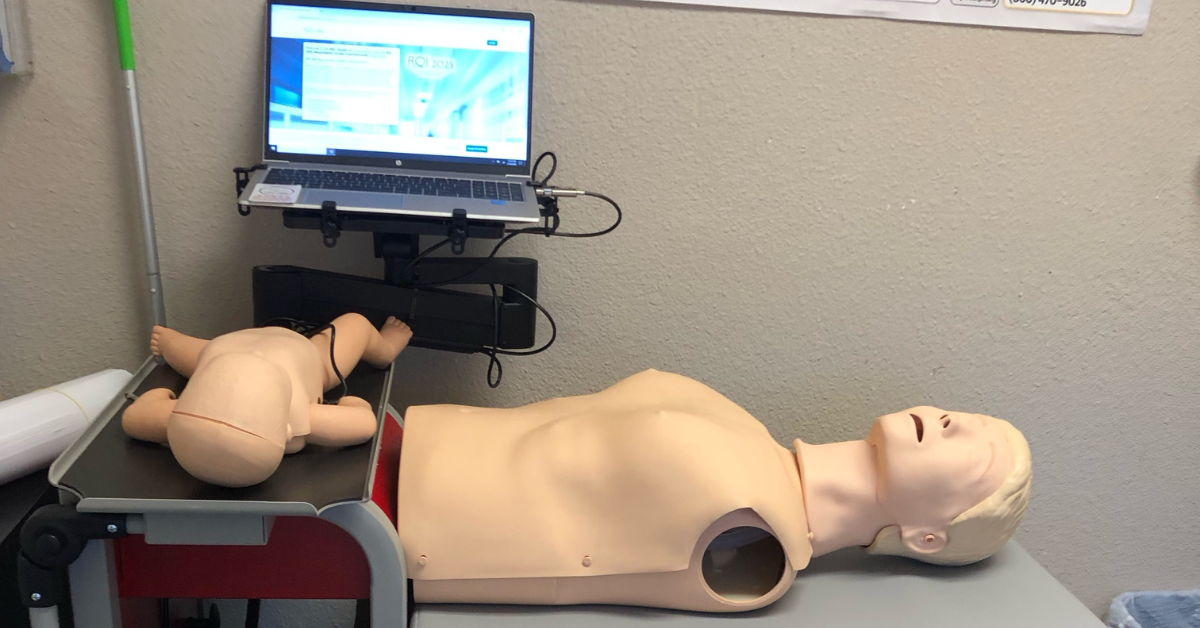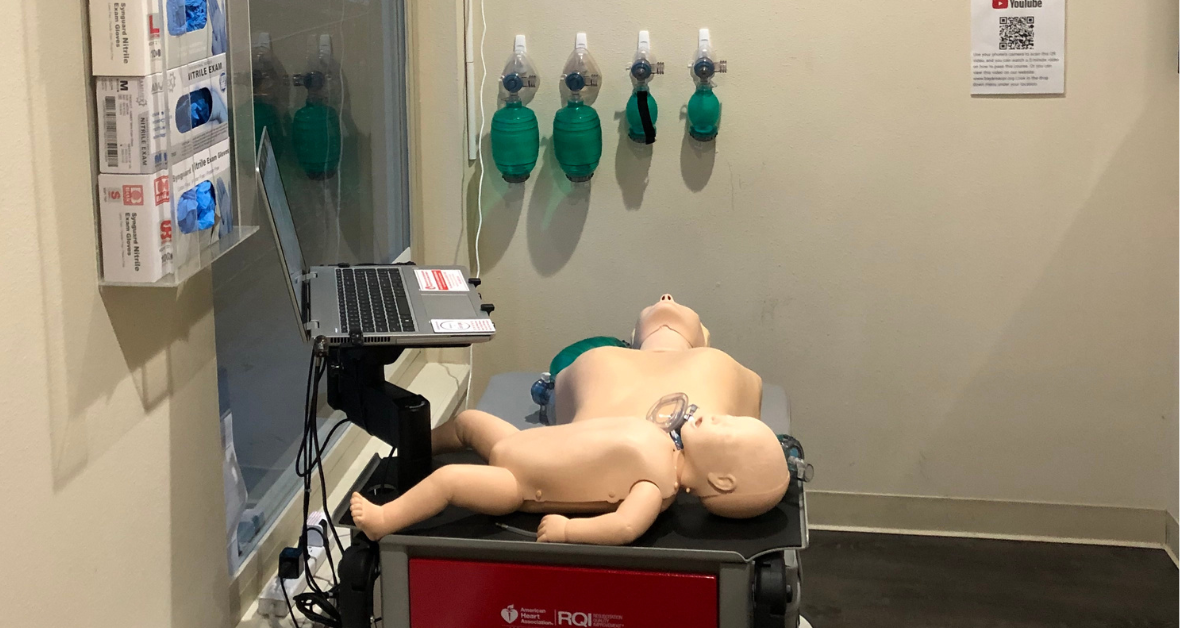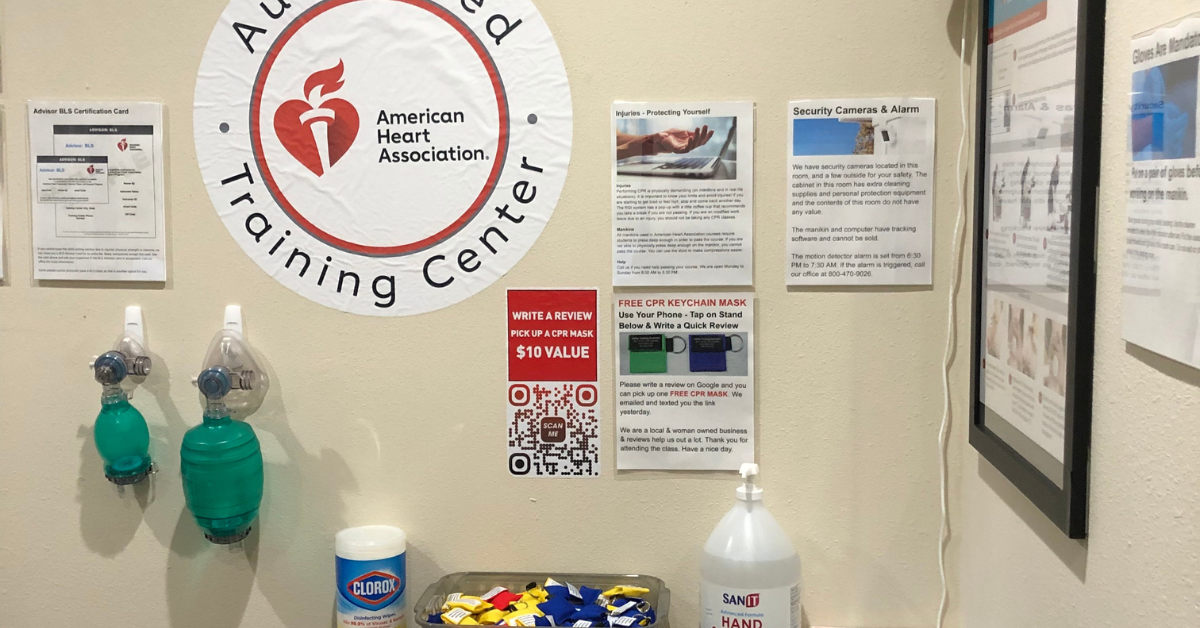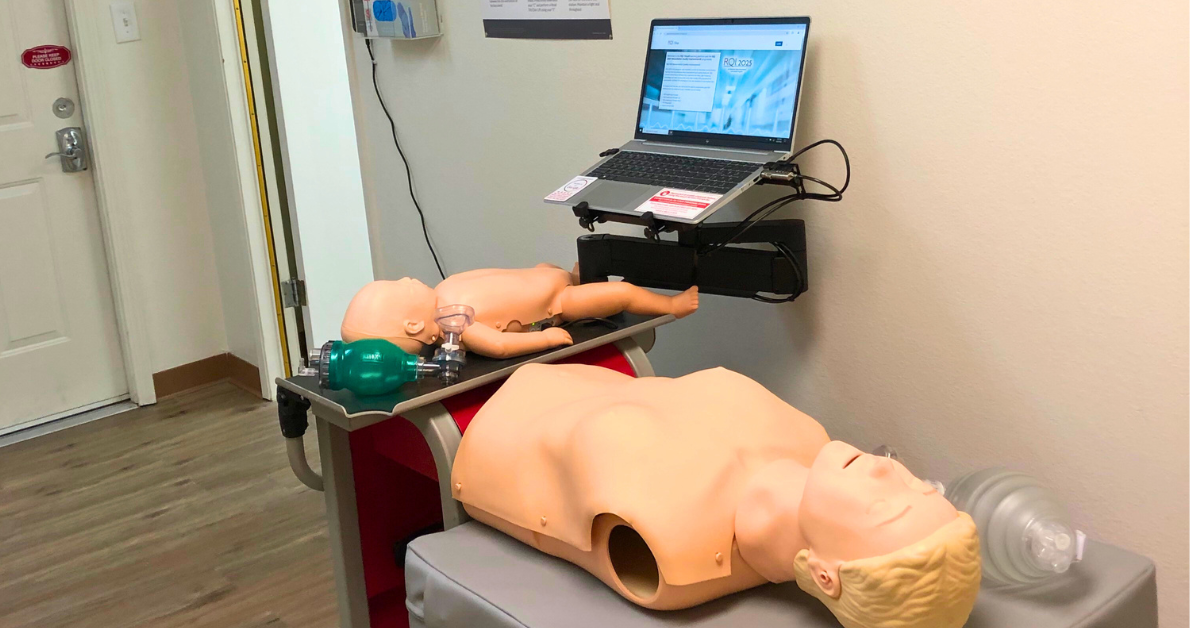Living in San Francisco means being part of a vibrant community, and part of that is looking out for one another. BLS certification in San Francisco equips you with the skills to provide immediate medical assistance in emergencies, potentially saving lives. This guide simplifies the process of getting BLS certified in San Francisco, covering different course formats, costs, and the importance of choosing an accredited program. Whether you’re pursuing a career in healthcare or simply want to be prepared for any situation, let’s explore how you can become a certified lifesaver in the heart of the Bay Area.
Key Takeaways
- BLS certification equips you with essential life-saving skills: Learning CPR, AED use, and airway management empowers you to respond effectively to emergencies, benefiting both healthcare professionals and the wider community.
- Choosing the right BLS course requires careful consideration: Factors like accreditation, hands-on training components, instructor experience, and flexible scheduling options should guide your decision. Seek out reputable training providers offering AHA-certified courses.
- Staying current with BLS through regular renewal strengthens your skills and career: Renewing your certification demonstrates a commitment to best practices and enhances your professional qualifications, ultimately contributing to better patient care and community preparedness.
What is BLS Certification?
BLS certification equips you with essential skills to respond to life-threatening emergencies. It focuses on providing immediate medical care to someone experiencing cardiac arrest, respiratory distress, or an obstructed airway. These situations can arise anywhere, from a hospital setting to a public place, making BLS training relevant for both healthcare professionals and the general public.
What Does BLS Certification Mean?
BLS certification signifies that you’ve completed a course and demonstrated competency in core life-saving techniques. These include CPR (cardiopulmonary resuscitation), using an AED (automated external defibrillator), and relieving airway obstructions. A BLS certification course covers the chain of survival, emphasizing early recognition and intervention. You’ll learn how to assess a patient, perform chest compressions, provide rescue breaths, and use an AED effectively. Safety Training Seminars offers American Heart Association BLS Certification in San Francisco.
Why is BLS Certification Important?
BLS certification empowers you to make a real difference in critical situations. It provides the knowledge and confidence to act quickly and effectively when every second counts. For healthcare providers, BLS certification is often a job requirement and demonstrates a commitment to patient safety. But even outside of the medical field, BLS training can prove invaluable. Knowing how to perform CPR or use an AED can save the life of a loved one, a stranger, or even yourself. You can find BLS classes in San Francisco with Safety Training Seminars.
Who Should Get BLS Certified?
While healthcare professionals like doctors, nurses, and paramedics benefit significantly from BLS certification, it’s valuable for anyone who wants to be prepared for emergencies. This includes teachers, lifeguards, coaches, childcare providers, and anyone working with the public. BLS training is also recommended for those who have loved ones with health conditions or simply want the peace of mind that comes with being prepared. The Red Cross offers a range of BLS certification courses.
Common BLS Certification Myths
Several misconceptions surround BLS certification. One common myth is that it’s only for medical professionals. This simply isn’t true; anyone can and should consider getting certified. Another myth is that BLS certification is too time-consuming. While the time commitment varies, many providers offer streamlined courses that fit busy schedules. Some also believe that CPR training alone is sufficient. However, BLS certification goes beyond basic CPR, covering a broader range of skills and knowledge. Finally, there’s a misconception that online BLS certification isn’t as credible. While in-person training offers hands-on practice, many reputable organizations offer online BLS certification that meets the same standards. American Health Training debunks common myths about BLS Certification. It’s important to remember that BLS certification requires renewal, typically every two years, to ensure your skills remain sharp.
Where to Get BLS Certified in San Francisco
Finding the right BLS certification course in San Francisco depends on your learning style, schedule, and budget. Several organizations offer training, each with its own approach. Here’s a look at some of your options:
Safety Training Seminars
Safety Training Seminars offers a comprehensive selection of American Heart Association (AHA) courses, including BLS certification. They focus on providing high-quality training at competitive prices, with a convenient San Francisco location serving the broader Bay Area, including Daly City, San Mateo, and Oakland. Visit their website for the latest course schedules and pricing. They also have a low price guarantee to ensure you’re getting the best value.
American Red Cross
The American Red Cross is a well-known provider of BLS certification and renewal courses in San Francisco. They offer various training options, including in-person classes and blended learning formats (a combination of online and in-person instruction). This flexibility can be helpful if you have a busy schedule or prefer a specific learning style. You can find a course near you on their website.
Revive CPR
Revive CPR offers AHA-certified CPR, BLS, and First Aid classes in San Francisco. Their emphasis is on instructor-led, hands-on training. They use live instructors, not voice-assisted manikins, for a more interactive learning experience. Visit their website to learn more about their course offerings.
American Heart Association
While the AHA doesn’t directly conduct training courses, they set the standards for CPR and BLS certification. Many organizations, including Safety Training Seminars, offer AHA-certified courses. You can explore training centers and find a class that fits your needs on the AHA website. They also offer resources and information on the importance of CPR.
ProCPR
ProCPR focuses on online BLS certification courses. This online format offers flexibility and convenience, allowing you to complete the training at your own pace. Their courses are designed for both healthcare professionals and the general public. Explore their website for more details on their online programs.
Course Formats, Duration, and Costs
Choosing the right BLS certification course depends on your learning style, schedule, and budget. Let’s break down the different formats, what they cover, and the general cost.
In-Person Training
In-person training remains a popular choice, offering hands-on learning and direct interaction with instructors. Safety Training Seminars offers a comprehensive selection of American Heart Association (AHA) courses, including BLS certification, in this format. The benefit of in-person training is the immediate feedback you receive, allowing you to perfect your technique under the guidance of an expert. This format is ideal for those who thrive in a structured classroom setting.
Online Courses
For those who prefer flexibility, online BLS courses are a convenient option. These courses allow participants to complete the training at their own pace, making them perfect for busy professionals or those with demanding schedules. Many institutions offer online BLS renewal as well. However, keep in mind that online courses typically require a separate in-person skills assessment to complete the certification process.
Blended Learning
Blended learning combines online learning with in-person skills sessions. Students cover the theoretical knowledge online and then attend an in-person session to practice and demonstrate their skills. This format offers a good balance of flexibility and hands-on training, allowing you to learn the essentials online and then refine your technique with an instructor. This guide to renewing your BLS certification offers more information on blended learning options.
Typical Course Length and Content
BLS certification courses typically cover essential life-saving techniques, including CPR, AED use, and how to relieve choking. The curriculum also emphasizes teamwork, communication, and high-quality CPR. Renewal is typically required every two years, with renewal courses covering updates in techniques and protocols to keep practitioners current with the latest advancements in emergency care.
Price and Value
BLS classes in San Francisco typically range from $50 to $150, depending on the provider and the type of certification. Safety Training Seminars offers a low price guarantee, ensuring you receive high-quality training at a competitive price. This investment provides valuable, potentially life-saving skills.
Find BLS Certification Discounts and Deals
Getting BLS certified doesn’t have to break the bank. Several options can make high-quality training more affordable. Knowing where to look can save you money while gaining these essential lifesaving skills.
Group Discounts
If you’re coordinating training for a group, such as your workplace, a scout troop, or a group of friends, explore group discounts. Many providers, including Safety Training Seminars, offer reduced rates for group bookings. This can be a convenient and cost-effective way to ensure everyone gets certified together. Often, providers will even come to your location, eliminating the need to coordinate travel.
Promotions and Seasonal Deals
Check training providers’ websites and social media for potential discounts. Many run promotions throughout the year, offering special deals on BLS certification. Groupon can also be a great resource for finding deals on local training courses, including those from Safety Training Seminars. A little research can go a long way.
Bundled Courses
Think about your future career goals. If you anticipate needing additional certifications like ACLS or PALS down the road, look for bundled course options. Combining BLS training with other certifications often leads to significant savings compared to taking each course individually. Safety Training Seminars offers various courses and packages, allowing you to tailor your training to your needs and budget.
Student and Healthcare Worker Discounts
Many training centers recognize the importance of BLS certification for students pursuing healthcare careers and working professionals. They often offer discounted rates for these groups. When researching BLS courses, inquire about applicable student or healthcare worker discounts. The cost of BLS classes can vary, so taking advantage of these discounts can make a real difference.
Choose the Right BLS Certification Course
Finding the right BLS certification course means considering a few important things. From accreditation and hands-on training to instructor qualifications, making informed choices ensures you get high-quality training that fits your needs.
Accreditation and Recognition
Look for courses accredited by reputable organizations like the American Heart Association (AHA). Safety Training Seminars offers a wide range of AHA-certified courses, including BLS certification. The AHA is a trusted authority in healthcare training, and their certification is widely recognized. The American Red Cross also provides BLS certification and renewal courses in San Francisco. An accredited program ensures your certification is valuable and credible.
Hands-On Training
Effective BLS training needs a substantial hands-on component. While online resources can be helpful, practicing essential skills like CPR and using an AED on mannequins is critical. BLS training comes in several formats, including in-person classes, online courses, and blended learning, so you can choose what works best for you. Prioritize programs that emphasize practical application to build confidence and competence.
Flexibility and Convenience
Think about your schedule and location when choosing a BLS course. In-person classes offer structured learning and direct interaction with instructors. Online courses provide flexibility for busy schedules. Blended learning combines the advantages of both. BLS course costs in San Francisco vary based on the provider, format, and included materials. Evaluate your needs and budget to find a course that’s a good fit.
Instructor Qualifications
Your instructors’ expertise directly affects your training quality. Instructors should be certified healthcare professionals with significant experience in BLS techniques. Safety Training Seminars offers AHA-certified BLS, ACLS, PALS, CPR, and First Aid courses in San Francisco, taught by qualified and experienced professionals.
Why Choose Safety Training Seminars?
Safety Training Seminars offers AHA-certified courses in over 60 Northern California cities, making quality training accessible. With a low-price guarantee and a focus on excellent customer service, they create a positive learning environment. Whether you’re a healthcare professional, a student, or want to learn essential lifesaving skills, Safety Training Seminars has comprehensive programs to meet your needs.
Renew Your BLS Certification & Grow Your Career
Keeping your BLS certification current is key for career advancement and providing top-notch patient care. This section covers everything you need to know about renewing your BLS certification and the benefits of staying up-to-date.
How Long Does Certification Last? How Do I Renew?
BLS certification from the American Heart Association is valid for two years. To renew, you’ll need to take a renewal course with an AHA-certified instructor before your current certification expires. This ensures you’re always equipped with the latest knowledge and techniques. Check our schedule for BLS renewal courses in San Francisco.
Renewal Process
The renewal process is straightforward. You’ll participate in a comprehensive review of essential BLS skills and knowledge, including any updated guidelines from the AHA. The course includes a skills test to confirm your proficiency. After successful completion, you’ll receive your updated BLS certification card, valid for another two years.
Continuing Education
Many healthcare professionals use BLS renewal courses to fulfill continuing education requirements. While the number of CEUs varies, BLS renewal often provides valuable credits toward maintaining your professional licenses and certifications. Check with your licensing board or employer for specific CEU requirements.
Stay Current with BLS
Staying current with BLS isn’t just about renewing your certification; it’s about maintaining a high standard of care. Regularly reviewing guidelines, practicing your skills, and understanding changes in protocols are crucial for confident and effective emergency response. Our BLS courses emphasize these practices to help you stay sharp and prepared.
Career Benefits for Healthcare Professionals
For healthcare providers, a current BLS certification is often a job requirement. It demonstrates your commitment to patient safety and your ability to respond effectively in critical situations. Maintaining your BLS certification can enhance your job prospects and create opportunities for advancement.
Community Impact and Emergency Preparedness
BLS skills extend beyond the workplace. Knowing BLS allows you to assist family, friends, and community members during medical emergencies. By renewing your certification, you contribute to a more prepared and resilient community. Find a BLS class near you and empower yourself to make a difference.
Frequently Asked Questions
Is BLS certification only for healthcare professionals? Not at all! While it’s definitely a must-have for doctors, nurses, and EMTs, BLS certification is incredibly valuable for anyone who wants to be prepared for emergencies. Teachers, coaches, lifeguards, parents, and anyone working with the public can benefit from having these skills.
What’s the difference between BLS and CPR certification? BLS certification is more comprehensive than just CPR training. It covers a broader range of skills, including using an AED, relieving choking, and understanding the chain of survival. Think of CPR as one piece of the larger BLS puzzle.
How long does it take to get BLS certified? The time commitment varies depending on the course format (in-person, online, or blended learning) and the provider. Many providers offer streamlined courses that can fit busy schedules, so you can find an option that works for you.
How much does BLS certification cost in San Francisco? BLS classes in San Francisco generally range from $50 to $150, depending on the provider and the type of course. Look for providers like Safety Training Seminars that offer a low-price guarantee to ensure you’re getting a good value. Also, check for group discounts, seasonal promotions, and bundled course options to save money.
How often do I need to renew my BLS certification? BLS certification typically needs renewal every two years. This ensures your skills and knowledge are up-to-date with the latest guidelines and best practices in emergency care.
Understanding the truth about CPR is essential for effective response in real-life emergencies. Whether you’re just starting or looking to renew your certification, enrolling in courses like BLS CPR Classes in Alameda, BLS CPR Classes in Newark, or BLS CPR Classes in Rocklin can provide you with accurate, up-to-date training. These programs not only debunk common myths but also empower participants with the skills to save lives confidently.


